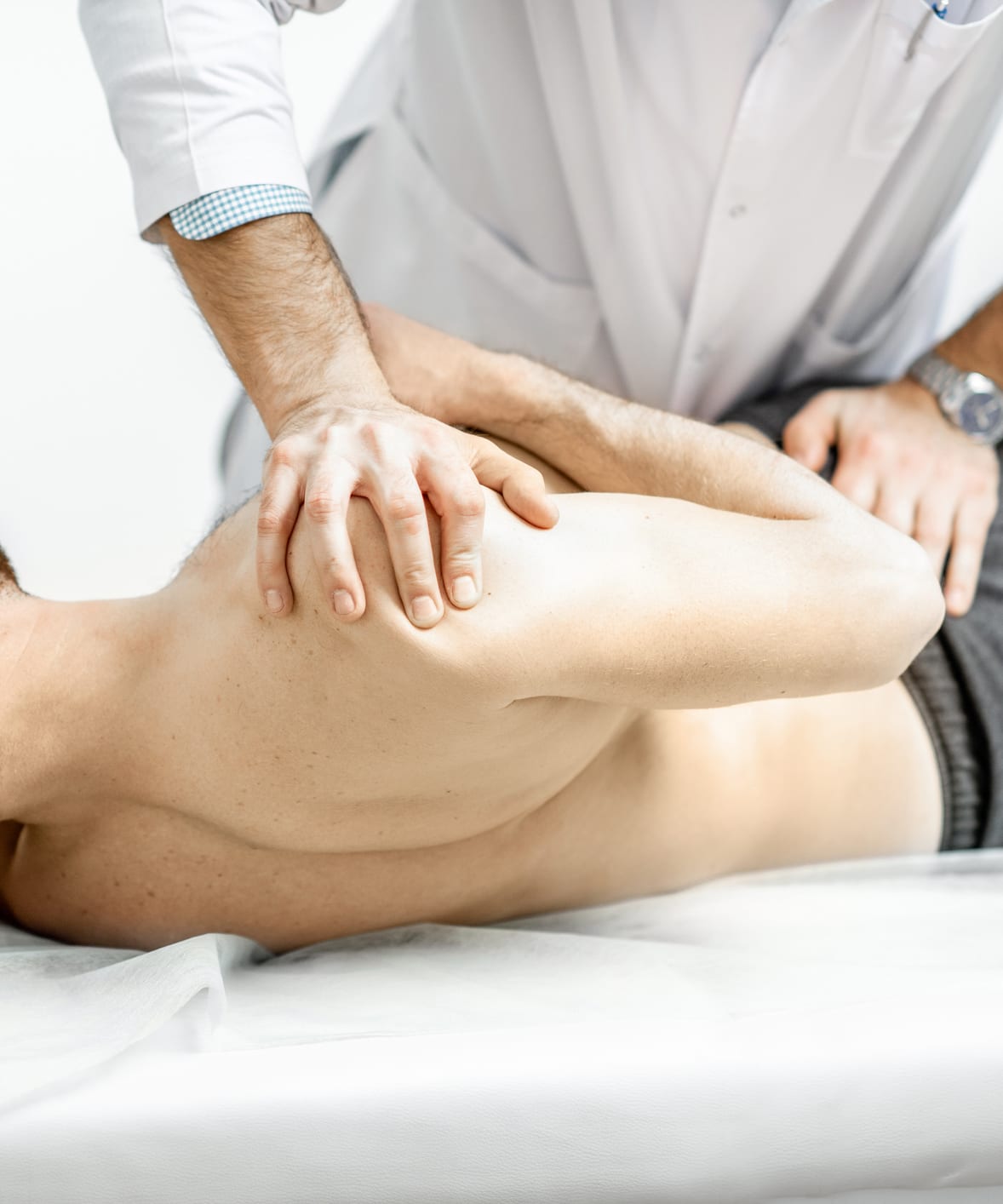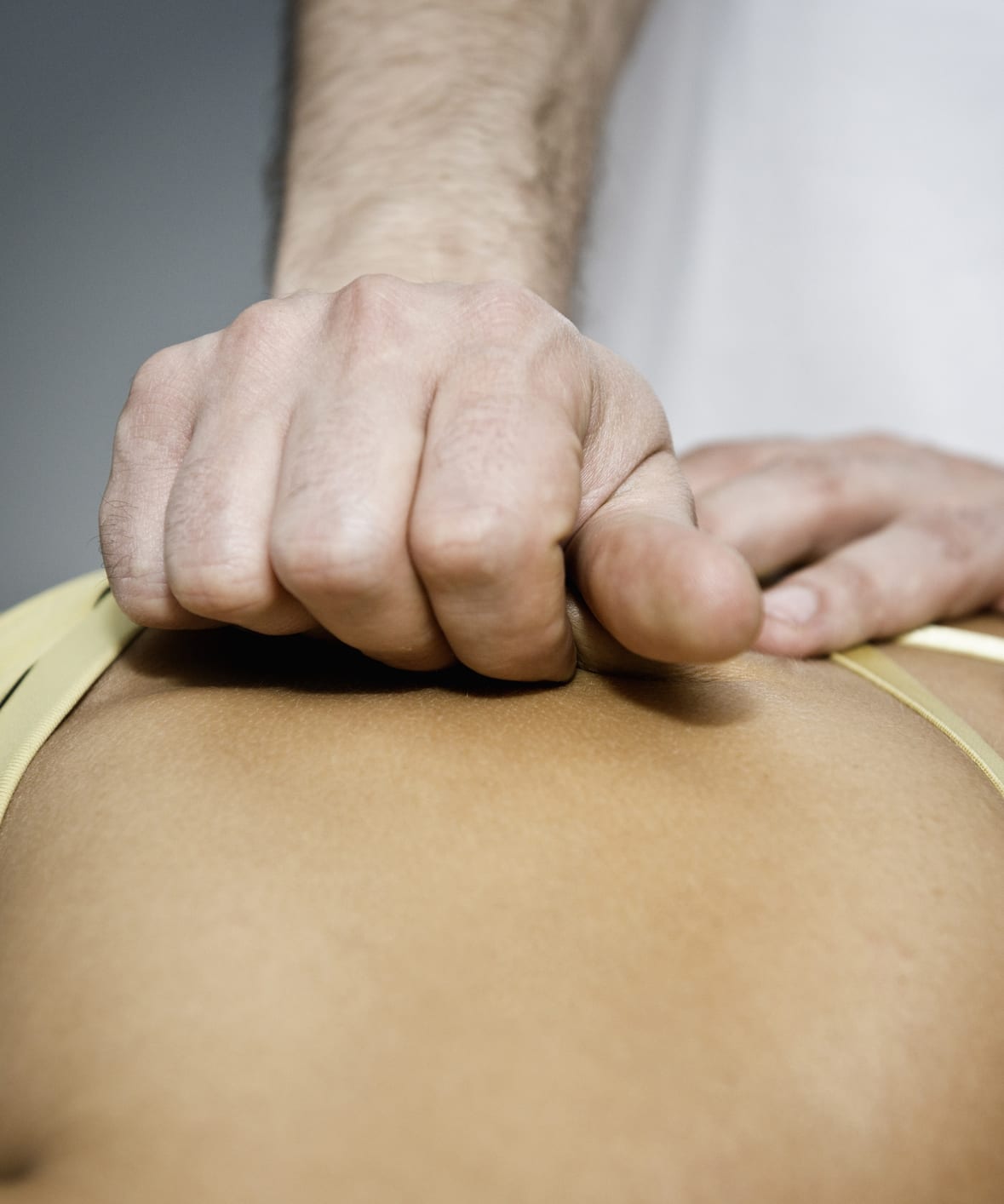Largest Locally Owned & Operated Physical Therapy Company in St. Louis
Manual Therapy Services from Advanced Training and Rehab
A crucial component to physical therapy rehabilitation is skilled, hands-on manual interventions. Our therapists are uniquely trained to isolate the specific tissue or joint that is affecting mobility or causing the reported discomfort. Using manual therapy, we can better assess the soft tissue or joint restrictions, and then use specific techniques to address those deficits. Treatments we offer include instrument-assisted soft tissue mobilization (IASTM), ASTYM therapy, myofascial release, joint mobilization, joint manipulation, and more.
Each type of manual therapy has its own benefits, but not every therapy is right for everyone. Your clinician will determine if any of these options are a good fit for your recovery.

Blood Flow Restriction Therapy
Blood Flow Restriction Therapy, or BFR, is exactly how it sounds; blood flow is restricted to the injured area of the body – typically used for arm or leg muscle injuries – to allow the muscle to fatigue without excessive load. The device used is similar to a blood pressure cuff and is FDA-approved. When blood flow is restricted, the muscle is forced to work with lower levels of fresh oxygen, facilitating the process by which strength gains are made. Our therapists have seen tremendous benefits from this particular therapy especially with rotator cuff injuries, anterior cruciate ligament (ACL) injuries, and improperly healed fractures.

Massage Therapy
Massage is considered to be a great manual therapy technique during recovery. It can complement your physical therapy treatment by improving mobility of soft tissue, improve flexibility, eliminate restrictions caused by tight fascia, decrease pain, and increase circulation to muscles and tissues. Massage can also help your clinician locate underlying scar tissue or other soft tissue restrictions that could limit certain therapeutic exercises.

Myfascial Release
During massage therapy, myofascial release treatment may be utilized to help reduce pain by easing tension and tightness in the body’s trigger points. When the therapist locates an area that feels tight, manual pressure is applied by massaging and stretching the area repeatedly until it feels more elastic. Individuals with a variety of ailments including myofascial pain syndrome, chronic headaches, or venous insufficiency benefit from myofascial release treatments. Because this treatment goes somewhat deeper than traditional massage therapy, it may not be right for everyone. Your clinician will help determine if myofascial release is right for you.

Instrument-Assisted Soft Tissue Mobilization (IASTM) and ASTYM Therapy
Instrument-assisted soft tissue mobilization (IASTM) and ASTYM therapy are myofascial release and massage techniques that use specialized tools to improve the mobility of soft tissues. The tools are usually made of plastic or metal, and are designed for your physical therapist to massage the muscles, fascia, and tendons more deeply to help reduce pain and improve movement.
The goal of IASTM is to help injured tissues reabsorb any excess scar tissue or fibrosis that may be causing you to have pain or limited movement. It also helps release and stretch any scar tissue adhesions. This therapy may benefit patients with tendonitis, ligament sprains, plantar fasciitis, scar tissue, and more. Based on your specific condition, pain level, and mobility restrictions, your clinician may determine that IASTM or ASTYM therapy is a recommended addition to your treatment.

Joint Mobilization
By manually applying directional force or pressure to joints, therapists use joint mobilization to help improve joint range of motion and reduce pain. Patients experiencing joint pain or stiffness benefit greatly from this fairly pain-free manual therapy technique. Joint mobilization can help treat frozen shoulder, tendinitis, spinal pain, stiff ankles, and more. Because it is low-intensity, almost any patient can benefit from this treatment. Your clinician will determine if your condition or injury would benefit from the use of joint mobilization therapy.

Active Release Techniques (ART)
With repetitive use, the tissues in an affected area of the body can develop adhesions, causing muscular weakness, numbness, tingling, burning, or aching sensations. When using active release techniques (ART), compression force is applied to the injured area while the patient moves in a way that shortens and lengthens all of the underlying soft tissues. ART has been shown to be beneficial for patients with adductor strains, carpal tunnel syndrome, sports injuries, frequent headaches, and more. After ART treatment, your clinician will continue working with you on exercises to help prevent symptoms from returning in the future.







